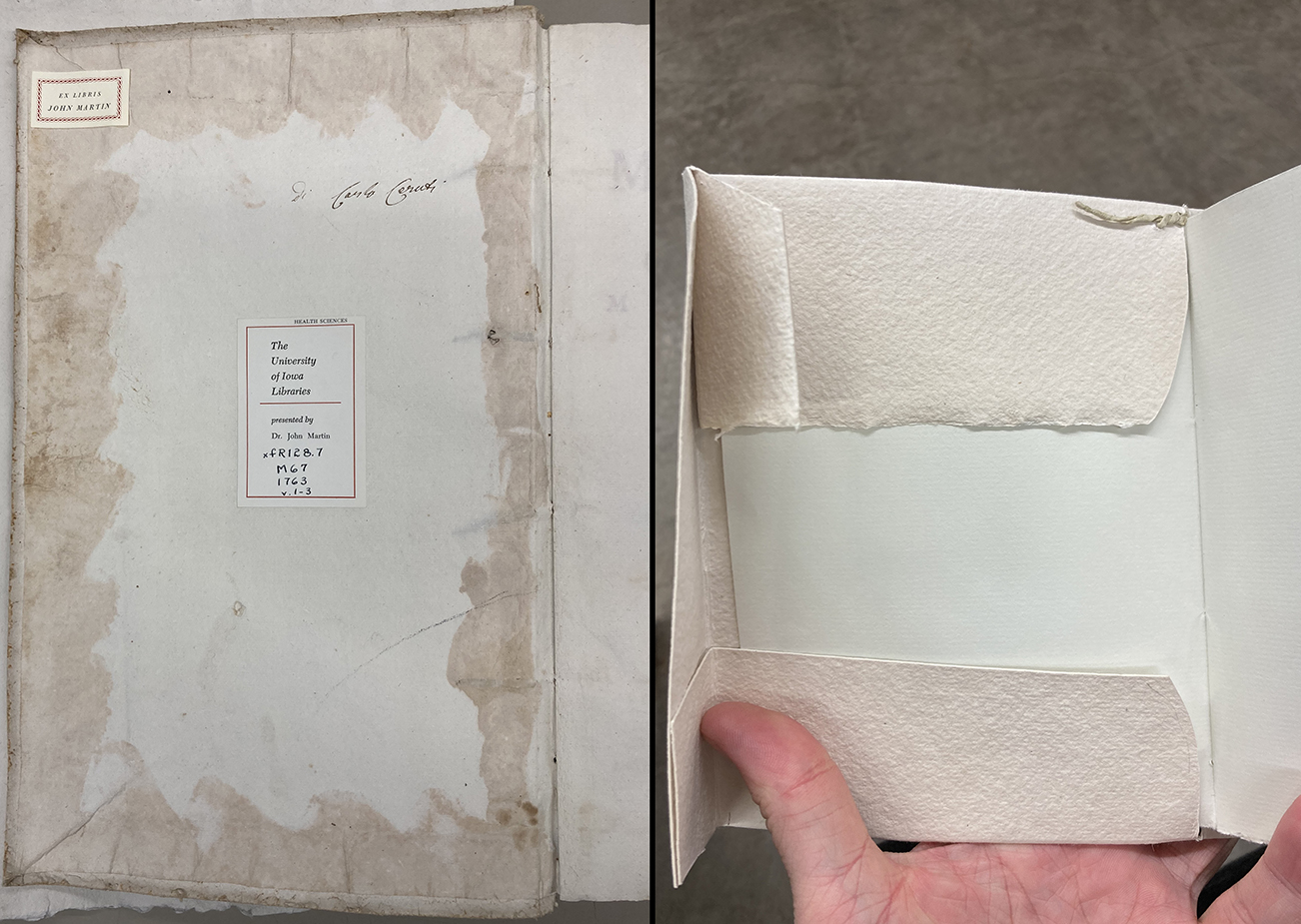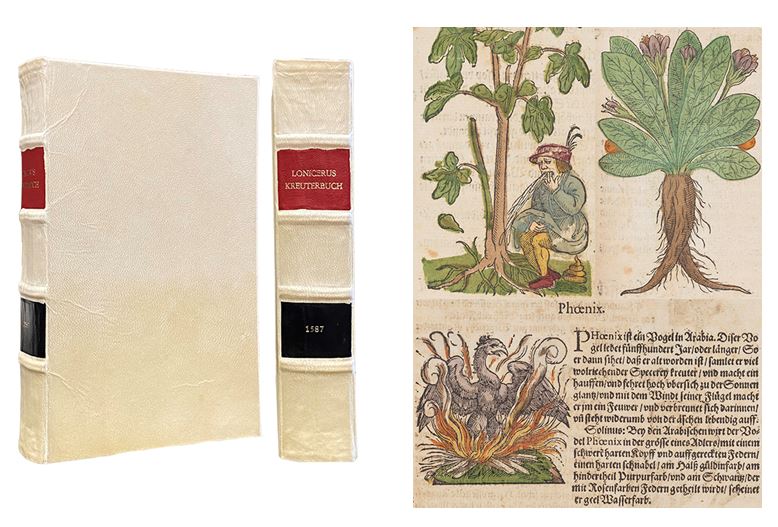By Beth Stone, MFA Collections Conservator, University of Iowa Libraries When volumes arrive in conservation, the first step is a quick assessment. Often this entails physical inspection of a cart of 30-80 items, ticking off from a checklist of the most common repairs or housings we provide. When an individual item is shuffled to aContinue reading “Conservator’s Corner | Saving The Morgagni”
Tag Archives: book conservation
Loncier, Kreuterbuch… | 1587 German Herbal | March 2021 Book of the Month from the John Martin Rare Book Room @Hardin Library
ADAM LONICER (1528-1586) Kreuterbuch, kunstliche Conterfeytunge der Bäume, Stauden, Hecken, Kreuter, Getreyde, Gewürtze. Printed in Frankfort by Christian Egenolph, 1587. 382 numbered leaves (764 pages) with color illustrations. 31 cm tall. We know from other sources that Lonicer (also referenced as Lonitzer, Lonicerum, Lonicerus, or Loniceri) worked as a proofreader for his father-in-law, aContinue reading “Loncier, Kreuterbuch… | 1587 German Herbal | March 2021 Book of the Month from the John Martin Rare Book Room @Hardin Library”

